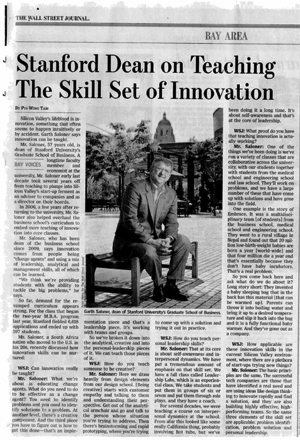In the May 16, 2012 issue of the WSJ, there is an article that echoes once again the frustration felt about education in the US.
The article starts with “The increasing role of standardized testing in U.S. classrooms is triggering pockets of rebellion across the country from school officials, teachers and parents who say the system is stifling teaching and learning.” It describes attitudes towards standardized testing and propagates the image that US education is in a mess, and going in circles – all true, but again lacking in a promising outcome (what does being absent from standardized testing accomplish?)
As I view it, the problem is NOT standardized testing – in the form of an annual assessment so that useful feedback can be gathered – it’s the paucity of design and useful data that defeats the humanitarian purpose of the exercise. For example, why is there not a balance between the current IQ-based assessment and an EQ-based assessment which together would better predict successful and meaningful learning? Why is the focus on how much knowledge/information a student can absorb and regurgitate? That is a recipe for an experiment with no controls, no frame or reference. In other words, production of useless data. Even worse, that useless data influences actions.
Annual standardized testing would be very useful in comparing educational productivity across cultures and other divides; and may direct our attention to systems that work better (although I don’t think anyone is using this method). Rather, I question the need for continuous assessment where every minute assignment has to result in a letter grade – that is what has taken the creativity out of learning, and the trend to grade lower and lower grades (in some cases, Kindergarten now) has made clear that this is educational bureaucracy’s focused goal.
I can accept that schools are knowledge transfer centers and that is what they strive to excel at. What is disappointing is the intrusive nature of the educational system which over-reaches by assigning useless and time-based homework as if intentionally aiming to prevent integration with real life. The school’s job could be better – to inspire students to want to learn outside of school times, to relate to the experience out of school, and to learn through self-awareness and other EQ qualities.
Put in the YCISL framework, it appears that while there is creative and critical thinking being exercise (our energy), it is fettered and too weak to make it all the way through the innovation process to create cases of successful leadership. This innovation step must be in a true quantum nature, and not incremental because of compromise.
Article link: http://online.wsj.com/article/SB10001424052702303505504577406603829668714.html





